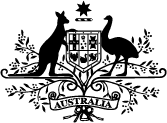Close to 500 health students each year are undertaking placements and their university degrees in Orange, providing a boost to health care in the region and equipping the next generation of students with the right skills and confidence to work regionally.
Federal Member for Calare, Andrew Gee said today during a visit to Charles Sturt University, that the university had in 2020 facilitated around 470 nursing, midwifery and allied health placements in Orange, equating to more than 1,835 weeks of rural training.
Mr Gee and Federal Regional Health Minister, Dr David Gillespie visited the local campus, which is enabling students to obtain clinical experience in public and private health services.
“Having student doctors and other health professionals undertaking training in Orange has created jobs and given local patients increased access to health care,” Mr Gee said.
Mr Gee said the Australian Government funds the Orange training facilities through its Rural Health Multidisciplinary Training (RHMT) program. The program aims to improve the recruitment and retention of doctors and health professionals in rural and remote Australia.
“Charles Sturt University has received almost $13.5 million from the Federal Government for its RHMT activities over the past three years,” Mr Gee said.
“Additionally, this year a partnership between CSU and Western Sydney University has enabled a Joint Program in Medicine with 37 places for medical students to get underway here in Orange.
“This program is supported by our Government; we provided capital works funding of $22 million from 2019 to 2022 to establish the initiative.
“Our region fought for years to get this medical school established against entrenched opposition. We can all take pride in the fact that it will be training doctors in the bush for practice in the bush for generations to come.
“Country people deserve the same access to medical services as people in the cities, and the CSU Medical School will play a key role in making sure we have this equality for our country communities,” said Mr Gee.
Minister Gillespie, a former regional doctor, said The Nationals understand that when students undertake training in a regional or rural area, like Orange, it means they are more likely to choose to live and work outside the major cities, once they are fully qualified.
“That’s why expanding rural training is a key part of the Government’s comprehensive strategy to increase the number of doctors, nurses, dentists and other health professionals serving our rural people,” Dr Gillespie said.
Mr Gee and Dr Gillespie visited Charles Sturt’s School of Rural Medicine based at the campus in Orange, one of the University’s five major sites. The University’s Rural Medical School and Three Rivers Department of Rural Health supports nursing, midwifery, dentistry and allied health students to study and undertake placements within the region.
The University’s Rural Medical School is part of the Murray-Darling Medical Schools Network which the Government is developing to build on rural undergraduate training through the RHMT program, to support a continuum for doctors to learn, train and work in the regions through five rurally based medical school programs.
Charles Sturt Vice-Chancellor Professor Renée Leon said the University has long been one of regional Australia’s most reliable and comprehensive pipelines of highly skilled, ready-to-work healthcare graduates.
“The Joint Program in Medicine is unique in Australia in that all clinical and classroom training takes place in regional settings, she said.
“The Program has been designed to help address the persistent health workforce gaps in rural, regional and remote communities.”
“Our medicine students study alongside our offerings in nursing and allied health, who are also critical to the health outcomes of regional Australians,” she said.
